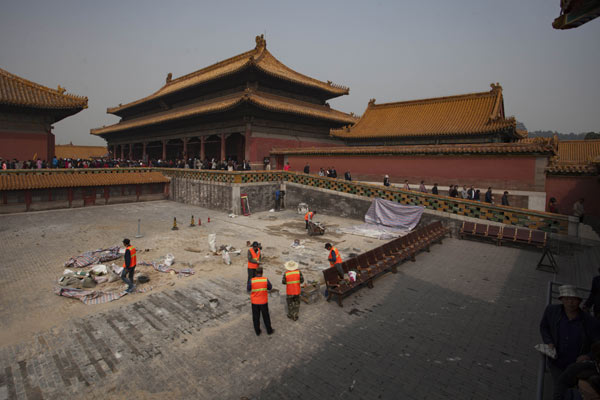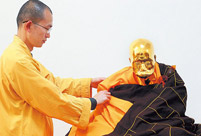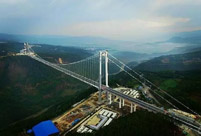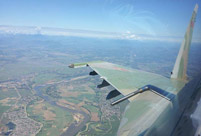

The Palace Museum in Beijing has confirmed the discovery of relics from the Yuan Dynasty (1271-1368) that were buried underground in the heart of the city for more than 600 years.

Maintenance work is carried out on a courtyard at the Palace Museum last month. ZHU WANCHANG/CHINA DAILY
The museum, also known as the Forbidden City, said on Thursday that the relics had been found during maintenance work at the historic site.
The Forbidden City was home to China's imperial palace from 1420 in the early Ming Dynasty (1368-1644) until the end of the Qing Dynasty (1644-1911).
Li Ji, head of the Archaeology Department at the museum's affiliated academic research institutes, said the relics were found under the west wing of the museum during work on laying an electric cable last year, but it had taken months to appraise them and confirm their age.
"The broken tiles and porcelain pieces are direct evidence that they come from no later than the start of the Ming Dynasty."
Li also said the foundations for construction work from the Ming and Qing dynasties were found above the Yuan relics.
"These three layers of relics indicate how layouts for buildings changed through time," he said.
He added that no Yuan relics had been found previously because of "scrupulous urban construction work" in the Ming Dynasty.
"Our fieldwork shows that almost all previous construction foundations were cleared out when the Forbidden City was built, to provide impeccable detail for the new palaces."
Li said the current studies are still at a preliminary stage and it is too early to analyze the original architecture.
"Basically, we can be sure it is from an important part of a Yuan Dynasty royal palace, but it's hard to say if it was on the central axis of Beijing at that time," he said, adding that the Forbidden City today stands on this axis.
He expects further studies to reveal how this axis has evolved through history.
Li said no large-scale archaeological work will be carried out on the relics, to minimize the impact on surviving ancient architecture.
"It's like playing puzzles," he explained. "We begin small-area excavations in different spots, and can obtain a panoramic view through comparative studies."
 Beijing Style: ready for bare legs
Beijing Style: ready for bare legs Century-old station sees railyway evolution
Century-old station sees railyway evolution Amazing scenery of Xisha Islands
Amazing scenery of Xisha Islands Enthusiasts perform Kung Fu at Wudang Mountain
Enthusiasts perform Kung Fu at Wudang Mountain Stunning photos of China's fighter jets in drill
Stunning photos of China's fighter jets in drill Monk's mummified body to be made into a gold Buddha statue
Monk's mummified body to be made into a gold Buddha statue Asia's longest and highest suspension bridge to open to traffic
Asia's longest and highest suspension bridge to open to traffic China's first interactive robot looks like a beauty
China's first interactive robot looks like a beauty Vietnamese Su-30 fighters fly over Nanwei Island in South China Sea
Vietnamese Su-30 fighters fly over Nanwei Island in South China Sea Top 20 hottest women in the world in 2014
Top 20 hottest women in the world in 2014 Top 10 hardest languages to learn
Top 10 hardest languages to learn 10 Chinese female stars with most beautiful faces
10 Chinese female stars with most beautiful faces China’s Top 10 Unique Bridges, Highways and Roads
China’s Top 10 Unique Bridges, Highways and Roads Unpredictable Trump could swing either way on China
Unpredictable Trump could swing either way on China Military institution scandal highlights shady Putianese private clinics
Military institution scandal highlights shady Putianese private clinics How to maintain property in communist system looms large as land warrants expire
How to maintain property in communist system looms large as land warrants expire Yiwu, China’s wholesale capital, switches its economic growth engine from manufacturing to design
Yiwu, China’s wholesale capital, switches its economic growth engine from manufacturing to designDay|Week